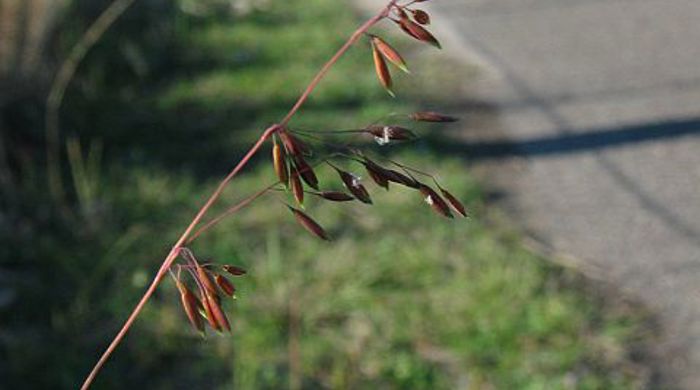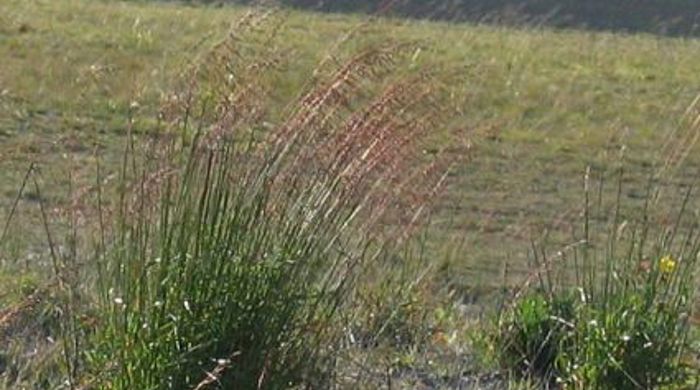Ehrharta calycina
Perennial veldt grass
Family: Poaceae
Origin: South Africa
Regional Pest Management Plan (RPMP) status
- Not a legally declared pest
General description
Perennial tussock-forming grass < 75 cm tall. Leaves are soft, green/reddish-purple and < 20 cm long. Flowers are borne in inflorescences that turn purplish with age.
What you need to know
Although perennial veldt grass is not a legally declared pest plant, it may still be invasive in some situations. Consider lower risk alternatives for your garden, such as native plants.
Habitats
Coastal areas, dunes, scrub, grassland, riparian margins, wetlands, disturbed sites, pastures, plantations, roadsides.
Dispersal
Seeds dispersed by wind and attachment to animal coats. Human-mediated dispersal through movement of contaminated machinery and vehicles.
Impact on environment
Forms dense stands, outcompeting native plants and altering habitat structure. Increases fire risk.
Control
Site Management
Follow up treated areas 3 times per year. Encourage natural regeneration of native plants or replant treated areas where possible after 2-3 treatments to establish dense ground cover and minimise reinvasion.
Recommended approaches
Physical control
Method: Dig out.
Plant parts requiring disposal: Seeds.
Disposal options: Remove to greenwaste or landfill if practical.
Biocontrol
Biocontrol is currently not available for this species.
Community agrichemical control recommendations
No qualifications: Foliar spray with 100ml glyphosate green per 10L of water.
Certified Handler/Experienced agrichemical user: Foliar spray with 100ml glyphosate green per 10L of water and 20ml penetrant. For infestations amongst desirable broadleaf species foliar spray with 60ml haloxyfop-P-methyl per 10L of water.
Caution: When using any herbicide or pesticide please read the label thoroughly to ensure that all instructions and safety requirements are followed.





